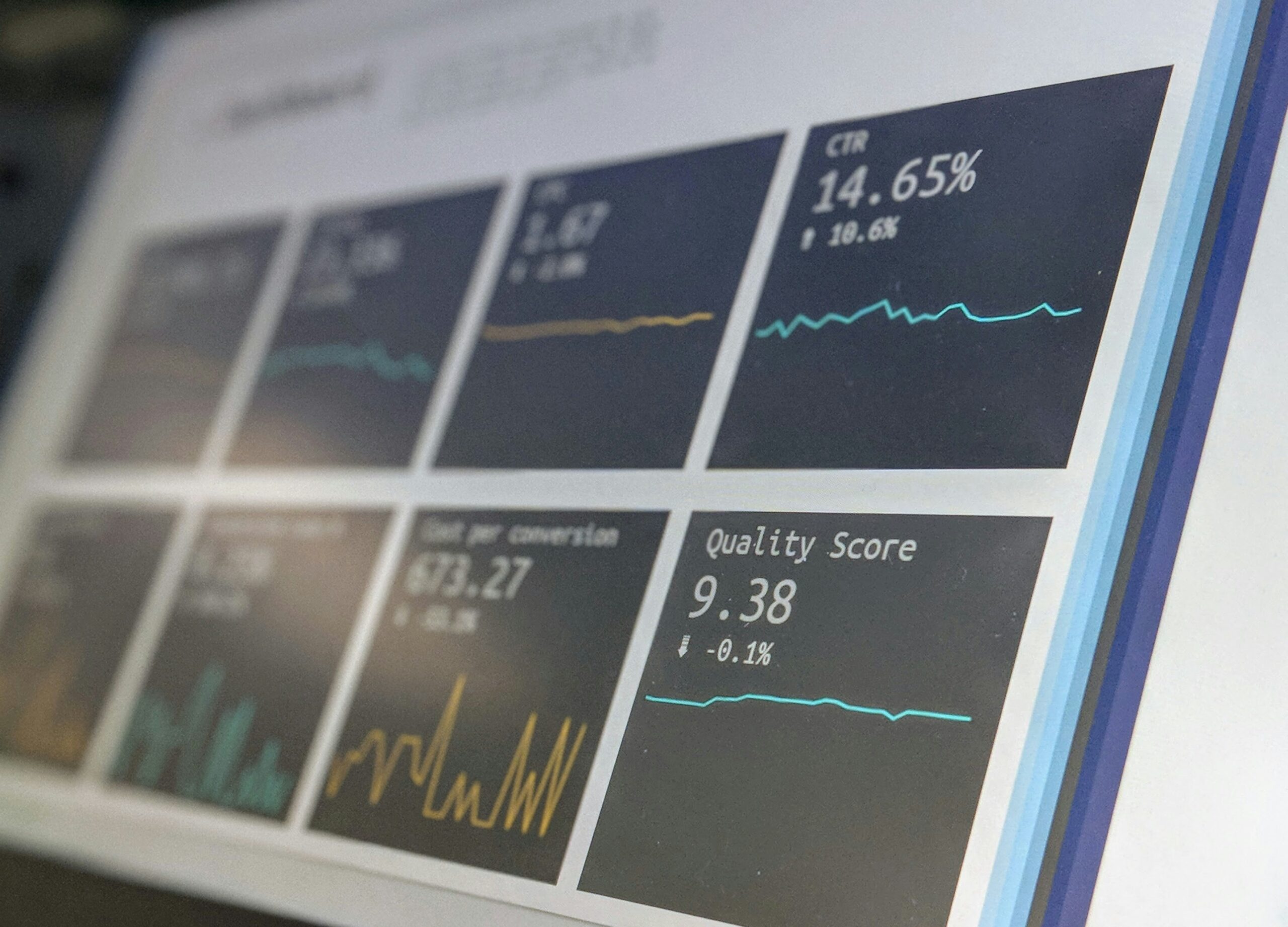Introduction to Data-Driven Decision-Making
Data-driven decision-making refers to the practice of collecting and analyzing data to inform and guide strategies and actions within an organization. In the nonprofit sector, this approach has emerged as a vital tool for enhancing operations, improving services, and ensuring effective allocation of resources. With a growing emphasis on accountability and transparency, nonprofits are increasingly recognizing the significance of utilizing data to substantiate their decisions and demonstrate their impact to stakeholders.
Harnessing data allows nonprofits and charities to identify trends, measure outcomes, and evaluate the effectiveness of their programs. By understanding specific metrics related to their organizational goals, nonprofits can make informed choices that lead to strategic growth and scaling efforts. For example, a nonprofit focused on community health may analyze data on local health metrics to adjust its outreach programs accordingly, ensuring that resources are directed where they are most needed.
The importance of data-driven decision-making in the nonprofit domain cannot be overstated. It provides a mechanism for evaluating past performance, optimizing current activities, and projecting future growth. This analytical approach empowers organizations to move past intuition-led strategies, adopting systematic methodologies that enhance their effectiveness. Moreover, leveraging data fosters a culture of transparency, where stakeholders—including donors, beneficiaries, and community members—can see and understand how decisions are made and the measurable outcomes they produce.
As nonprofits continue to evolve in an increasingly competitive landscape, embracing data-driven strategies can significantly amplify their impact. By integrating data into their operational framework, organizations are not only enhancing their decision-making processes but also strengthening their overall mission and capacity for fostering meaningful change in society.
Understanding Different Types of Data
Nonprofits often rely on various types of data to drive their decision-making processes effectively. Understanding these data types is critical for organizations aiming for growth and scaling in their operations and initiatives. Broadly, data can be categorized into qualitative and quantitative data. Qualitative data encompasses non-numeric information that captures the qualities of a subject, such as insights from interviews, open-ended survey responses, or donor feedback. This type of data is particularly valuable for understanding community needs, evaluating program effectiveness, and enhancing stakeholder engagement through deeper emotional connections.
On the other hand, quantitative data consists of numeric values that can be measured and analyzed statistically. This includes data like donation amounts, demographic statistics, and program performance metrics. Nonprofits can utilize quantitative data to track performance, return on investment, and trends over time, supporting strategic planning and resource allocation. Both qualitative and quantitative data play complementary roles in developing a comprehensive view of an organization’s impact and operations.
Furthermore, data can also be classified as primary or secondary. Primary data is collected firsthand by nonprofits through methods like surveys, focus groups, or direct observations. This data reflects the unique perspectives and experiences of the organization’s stakeholders. In contrast, secondary data refers to information that has already been collected and published by others, such as research reports, government statistics, or academic studies. Nonprofits can leverage secondary data to gain contextual insights or benchmark their performance against industry standards.
Finally, the distinction between structured and unstructured data is also essential. Structured data is organized and easily searchable, often found in databases and spreadsheets. Unstructured data, however, is more varied and complex, including text files, images, and video content. By understanding and utilizing different types of data, nonprofits can make more informed decisions, enhancing their ability to serve their communities effectively.
Setting Clear Objectives and Questions
Effective decision-making in nonprofits hinges on the strategic use of data, making the initial step of defining clear objectives and pertinent questions crucial. Nonprofits often operate with limited resources, making it essential to ensure that every data initiative is focused on driving meaningful progress. By establishing specific objectives, organizations can channel their efforts and concentrate on areas that align with their mission and overall goals.
It is advisable for nonprofit leaders to begin by conducting an assessment of their organizational priorities. This involves engaging with stakeholders to pinpoint the core areas where data analysis can have the greatest impact. For instance, if a charity’s primary aim is to improve community outreach, questions may revolve around understanding who the beneficiaries are, where they can be found, and how best to engage with them. This process helps in formulating a data strategy that is relevant and targeted.
Moreover, crafting questions that delve into the organization’s activities and outcomes can greatly increase the effectiveness of data use. Questions should be clear, measurable, and aligned with the nonprofit’s strategic goals. By focusing on queries such as, “What are the key factors influencing donor retention?” or “How effective are our programs in achieving desired outcomes for beneficiaries?”, nonprofits can position themselves to gather actionable insights that inform their growth and scaling strategies.
Ultimately, the clarity of objectives and questions not only streamlines the data collection process but also enhances the relevance of the insights gained. This thoughtful approach ensures that data serves as a powerful tool in driving decision-making processes, enabling charities to harness their full potential in delivering valuable services and realizing their missions effectively.
Collecting Relevant Data
The collection of relevant data is a fundamental practice that enables nonprofits and charities to make informed decisions and streamline their operational strategies. Various methods can be employed to gather data, each with its distinct advantages and potential limitations. Surveys represent one of the most common tools for data collection as they allow organizations to capture quantitative insights efficiently from a large pool of stakeholders. Much like surveys, interviews provide the opportunity for a deeper investigation into the motivations and experiences of individuals, yielding qualitative data that may be crucial for understanding the needs of the community served.
Focus groups also serve as an effective data collection method, facilitating discussions among selected participants to elicit diverse perspectives on specific topics. This technique often uncover insights that may not surface through standard surveys or interviews. Another source of valuable data comes from nonprofit management systems, which can track operational metrics, donor engagement, and program effectiveness. These systems centralize critical information and enable organizations to analyze their data effectively, leading to improved strategies for growth and scaling.
While collecting data, it is crucial to consider ethical implications, including the need for informed consent from participants and ensuring representation within the examined population. Nonprofits have a responsibility to ensure that their data collection methods respect the privacy and autonomy of individuals while striving for inclusivity. This not only enhances the quality of the data acquired but also builds trust within the community. By prioritizing ethical practices and diverse participation, organizations can enhance their understanding and ultimately foster informed decision-making processes that support their mission and vision.
Analyzing Data for Insights
Within the nonprofit sector, the effective analysis of data is essential for driving informed decision-making. By harnessing collected data, nonprofits and charities can extract meaningful insights that promote tailored strategies for growth and scaling their operations. This process typically involves utilizing various analytical tools and techniques, including statistical analysis and data visualization, which are crucial for transforming raw data into actionable knowledge.
Statistical analysis is a foundational method that allows organizations to understand trends, patterns, and correlations within their collected data. Techniques such as regression analysis, clustering, and hypothesis testing help identify relationships between different data points, offering nonprofits a clearer perspective on their programs’ effectiveness. By applying these methodologies, organizations can discern what factors contribute to their success, enabling them to allocate resources more judiciously and refine their strategic initiatives.
In addition to statistical methods, data visualization plays a pivotal role in the interpretation of complex datasets. Visual tools such as graphs, charts, heatmaps, and dashboards allow nonprofits and charities to present their data in an easily digestible format. These visual representations enhance clarity, facilitating the identification of trends and anomalies that might otherwise remain hidden in numerical data tables. With effective data visualization, stakeholders can quickly grasp insights and make informed decisions that contribute to the organization’s strategic direction.
Importantly, the contextual interpretation of data should not be overlooked. It is critical for nonprofits to comprehend the circumstances surrounding their data, including donor demographics, community needs, and local economic factors. By understanding these contexts, organizations can derive insights that are relevant and practical, ensuring that their decisions reflect the realities of their operational environment. This comprehensive approach to analyzing data ultimately supports nonprofits in making impactful, data-driven decisions that promote sustainable growth.
Using Data to Validate Assumptions and Strategies
In the realm of nonprofits and charities, leveraging data is crucial for validating existing assumptions and revising strategies to ensure effective growth and scaling. Nonprofit organizations often operate under certain beliefs about their programs, services, and target demographics. However, without the backing of concrete data, these assumptions can lead to misinformed decisions that compromise the organization’s mission. By employing robust data analytics, nonprofits can substantiate their hypotheses or uncover new insights that drive decision-making.
One practical approach to using data for validation is conducting surveys and analyzing demographic information. For instance, a charity focused on youth education might assume that their programs are equally beneficial across all age brackets. By analyzing data from participant outcomes, feedback surveys, and engagement metrics, the organization can determine which age groups are actually benefiting the most, and adjust their strategies accordingly. This practice not only enhances program effectiveness but also ensures that resources are allocated where they will yield the highest impact.
Real-world case studies further demonstrate the significance of utilizing data in the decision-making process. A notable instance involves a nonprofit dedicated to enhancing public health outcomes. Through data-driven analysis, they identified a particular geographic area where health disparities were prevalent. Armed with this information, they were able to implement targeted outreach initiatives, thereby refining their strategies to better serve the community. The success of these data-informed interventions illustrates the transformative potential of leveraging analytics in nonprofit operations.
Ultimately, incorporating data into the validation process equips nonprofits with the necessary insights to refine their strategies and assumptions. By making informed decisions grounded in empirical evidence, nonprofits can foster sustainable growth, effectively scale their initiatives, and enhance their overall mission alignment.
Communicating Data Insights to Stakeholders
In the nonprofit sector, effectively communicating data insights is paramount to demonstrating accountability, informing decision-making, and driving growth. Nonprofits often engage with a variety of stakeholders, including board members, staff, and funders, each with distinct interests and levels of understanding of the data presented. It is critical to tailor the message accordingly to ensure that the insights resonate with the audience. For instance, board members may prioritize strategic implications, whereas funders might focus on impacts and outcomes. Adapting the communication style to align with these diverse perspectives can significantly enhance engagement with the data.
One effective strategy for presenting data insights is employing storytelling techniques. Storytelling allows nonprofits to frame data within a narrative that illustrates the significance of the information. A compelling story that highlights individual cases or broader trends can foster emotional connections that mere numbers often fail to achieve. For example, sharing testimonials from beneficiaries alongside relevant data can illustrate the real-world impact of charitable initiatives, making the insights more relatable and persuasive.
Furthermore, the use of visuals is an integral component of effective data communication. Graphs, charts, and infographics can simplify complex information, making it easier for stakeholders to grasp key points quickly. Visual aids draw attention and can highlight trends or benchmarks effectively, thereby enhancing understanding. Incorporating these visuals into presentations or reports is essential, as it caters to various learning styles and can engage audiences more fully. In summary, by tailoring messages, employing storytelling techniques, and utilizing visuals, nonprofits can communicate data insights effectively, thereby fostering a deeper understanding among stakeholders and facilitating informed decision-making for scaling and growth.
Implementing Data-Driven Decisions
Transitioning from data analysis to actionable decisions is crucial for nonprofits seeking growth and scalability. Effective data utilization begins with a structured process that includes developing comprehensive action plans based on insights derived from data. Initially, nonprofits need to clearly define what the data reveals about their current operations, challenges, and opportunities. This process allows organizations to leverage their data to identify specific areas for improvement, leading to better alignment of their resources and strategies.
Once insights are drawn, setting measurable goals becomes the next logical step. Nonprofits should establish specific key performance indicators (KPIs) that align with their overarching mission and objectives. These KPIs serve as benchmarks to evaluate progress and effectiveness, driving accountability within the organization. For instance, a charity could utilize data to determine their donor engagement levels, allowing them to set a target for increasing donor retention rates by a defined percentage over a set timeframe.
Moreover, establishing accountability mechanisms is vital for ensuring the successful implementation of decisions based on data insights. This includes assigning clear roles and responsibilities to team members for each action item in the plan. Regular check-ins and progress reviews can facilitate ongoing conversations about data outcomes, making it easier to adjust strategies in response to new information or changing circumstances. Communication channels should remain open to foster a culture where data-driven decision-making is embraced throughout the organization.
Ultimately, by rigorously applying data insights to decision-making processes, nonprofits can enhance their operational effectiveness and drive meaningful impact. Engaging with data not only supports better decision-making but also empowers charities to be more adaptable and responsive to the needs of the communities they serve. In conclusion, the effective implementation of data-driven strategies is an integral part of a nonprofit’s journey toward growth and scaling its impact.
Measuring Success and Adjusting Strategies
In the dynamic landscape of nonprofits and charities, measuring success is not just a one-time activity but a continuous process rooted in data analysis. To effectively gauge the impact of their initiatives, organizations must establish clear metrics, aligned with their mission and the varying needs of their target populations. This can involve quantitative data, such as the number of beneficiaries served or funds raised, and qualitative data, like beneficiary feedback or stakeholder satisfaction. Collectively, this data provides a robust framework for understanding the effectiveness of programs.
The methodologies employed for measuring outcomes should encompass both short-term and long-term impacts. For example, nonprofits might utilize surveys or performance metrics that assess immediate outputs, alongside longitudinal studies that evaluate sustained changes in community well-being. Such comprehensive data collection enables organizations to assess the relevance and effectiveness of their strategies and makes it easier to pivot when necessary.
Once data is collected, it is crucial for organizations to analyze and interpret this information with a keen eye towards adjusting strategies. Trends identified through data can suggest what aspects of a program are successful and which are not. Leveraging this information facilitates informed decision-making that propels growth and scaling processes. Charities that embrace a culture of learning are better positioned to adapt to changing environments and shifting beneficiary needs. By encouraging feedback loops and stakeholder engagement, these organizations foster an atmosphere where ongoing evaluation is valued, and data-driven insights influence future initiatives.
In conclusion, the commitment to continuously measure success and adjust strategies based on data not only enhances the effectiveness of nonprofits but also solidifies their role as adaptive and responsive entities within the community. Engaging with data in this manner ultimately drives impactful outcomes and ensures the charity’s mission remains vibrant and relevant.




